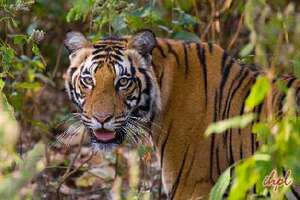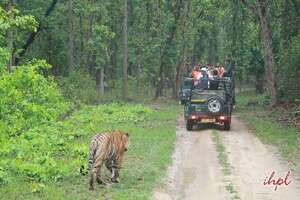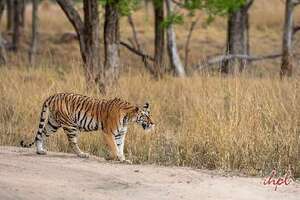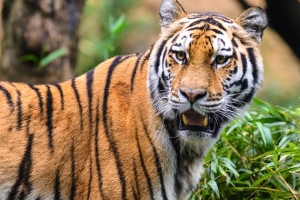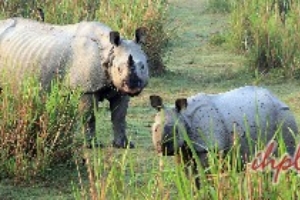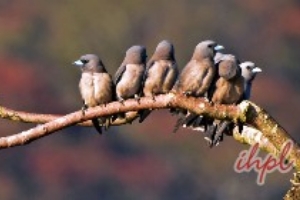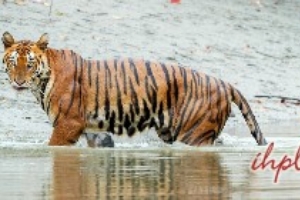The flora in Bandhavgarh Park is varied and ranges from grasslands to densely forested slopes. The forest in Bandhavgarh National Park, falls within the tropical moist deciduous belt dominated by Sal (Shorea robusta)and Bamboo (Dendrocalamus strictus), which form varying mixtures with each other.
Technically termed as Sal forest, the other common flora in Bandhavgarh National Park includes tree species such as, Saja (Terminalia tomentosa), Dhauda (Anogeissus latifolia), Tendu (Diospyros melanoxylon), Arjun (Terminalia arjuna), Palas (Butea monosperma), Salai (Boswellia serrata), Bhirra (Chloroxylon sweitenia), Gamar (Gmelina arborea), Dhaman (Grewia tilifolia), Kalasiris (Albizzia lebbek), Khair (Acacia katechu), Frankincense tree (Boswellia serrata), Kusum (Scleichera trijuga) and Haldu (Adina cardifolia).
The trees, bushes and grasses at Bandhavgarh National Park provide the deer and other herbivores with food throughout the year, The herbivores in turn form the prey base for the tiger, who dominate the other indian wildlife in the Bandhavgarh National Park.
Fruiting trees include Ambla (Emblica officinalis), Jamun (Syzigium cuminii) and ficus species, all of which are favoured by birds and herbivorous species of Indian wildlife in Bandhavgarh National Park. Amongst the flowering trees are Palash, the Flame of the Forest (Butea monosperma), and the climber (Butea superba), Kapok (Bombay ceiba) and Amaltas (Cassia fistula).
Mahua (Madhuca indica) is very common with the flowers being used by local villagers to make a potent home brew. The grasslands are where village fields once existed. Today they are the grazing grounds of deer and other forms of herbivorous Indian Wildlife.
Sal trees cover low, undulating and plain tracts and cover over half the area – on the upper slopes it is replaced by mixed vegetation of Sal, Saja, Dhobin etc, adding to the varied flora in Bandhavgarh National Park. Gregarious flowering of bamboo in the year 1984-85 has resulted in profuse regeneration of bamboo all over Bandhavgarh National Park.
The forest can be classified as,
- Moist Peninsular Low Level Sal
- West Gangetic Moist Mixed Deciduous Forests



